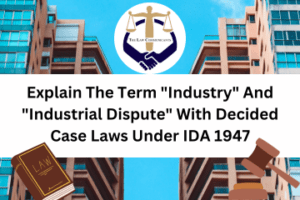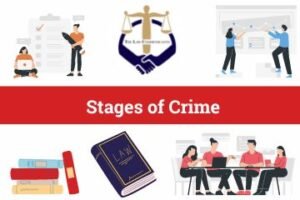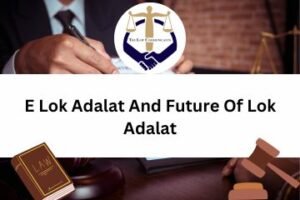Human Trafficking: Legal Frameworks and Enforcement Challenges
Written by: Prachi Bansal
Introduction:
Human trafficking persists as a modern-day form of slavery despite global efforts to eradicate
it. Originating from historical practices like the African slave trade, it now manifests in various forms such as forced labour, sexual exploitation, and organ trafficking. Despite advancements in human rights and legal frameworks, trafficking remains a significant challenge, particularly affecting women and children who are trafficked for commercial sexual exploitation or forced labour in sectors like agriculture and domestic work.
Defining Human Trafficking:
Human trafficking involves the trade of humans for forced labour, illegal migration, or sexual slavery, whether for commercial prostitution or personal servitude. It primarily manifests through forced labour and sexual exploitation. Victims of this crime include men, women, and children of all ages, races, and backgrounds, stripping them of their dignity and rights. It poses a significant threat to national economic security wherever it occurs, constituting one of the largest and fastest-growing criminal industries globally. According to the United Nations, up to 27 million individuals worldwide live in conditions akin to slavery due to human trafficking 1.
Causes and Impact of Human Trafficking:
Human trafficking is fueled by political, economic, and cultural factors, with economic instability, poverty, limited education, and demand for cheap labour and sex services in developed nations playing pivotal roles. Organized crime groups capitalize on these conditions, profiting through smuggling routes that expose victims to exploitation, violence, and abuse. The impact on victims is profound, encompassing severe abuse and exploitation leading to enduring physical and psychological trauma. Even after liberation, victims often grapple with conditions like sexually transmitted diseases and psychological distress, hindering their rehabilitation and return to normalcy.
Populations at Risk:
Certain groups are particularly vulnerable to human trafficking, including victims of childhood abuse, people experiencing homelessness, those in foster care or juvenile justice systems, survivors of violence, LGBTQ+ individuals facing discrimination, migrant workers, racial minorities, low-income individuals, and communities affected by intergenerational trauma. Women, children, migrants, and refugees in conflict zones are especially at risk due to their marginalized status and lack of resources and legal protections
Legal Framework for Combating Human Trafficking:
Constitution of India:
Article 23- Protects against exploitation, prohibits traffic in humans and beggar and makes this practice punishable under law.
Article 24- Protects children below age 14 from working in factories, mines or other hazardous employment 2 .
Indian Penal Code:
Section 366A of the Indian Penal Code defines trafficking as “inducing any minor girl under the age of eighteen years to go to any such place with intent to force or seduce illicit intercourse with another person.” There are approximately 25 provisions for trafficking in the Indian Penal Code.
Under Section 366B, it is illegal to import a girl under the age of 21 to coerce or seduce her into having sexual relations with another person.
Section 374 punishes anyone who unlawfully forces another person to work against their will 3.
The Immoral Traffic (Prevention) Act of 1956:
Is the primary piece of legislation aimed at preventing sexual exploitation of women and girls. The Goa Children’s Act of 2003, which is a state law, is the only source of definition for the term “trafficking.” As a result, even though the ITPA is the primary piece of legislation that deals with commercial sexual exploitation of children, it does not define trafficking 4.
Judicial Perspectives on Human Trafficking:
The Indian judiciary has been instrumental in combating human trafficking, ensuring equal
application of the rule of law and holding everyone accountable without discrimination. It
acts as the guardian of the constitution and has delivered several landmark rulings aimed at
preventing and combating human trafficking in the country.
People’s Union for Democratic Rights v. Union of India 5: In a landmark judgment, the Supreme Court ruled that the right against forced labour, as defined in Article 23 of the Indian Constitution, includes the right to receive a minimum wage. The court defined ‘forced labour’ broadly to encompass situations where economic distress compels individuals to accept inadequate remuneration without any bargaining power, thereby leaving them with no viable alternatives. Thus, ‘force’ under this definition extends beyond physical or legal coercion to include economic compulsion.
Bachpan Bachao Andolan v. Union of India 6: In this landmark judgement, the Supreme Court
recognized Trafficking as an organized crime and defined it in accordance with the optional protocol of the United Nations Convention against Transnational organization crime (UNCTOC). The court also ordered a total ban on children’s use in circuses.
Bandua Mukti Morcha v. Union of India: This landmark judgement by the hon’ble Supreme court of India covers the rights of bonded labour. The court elucidated the rehabilitation of bonded labour and directed the Government of India to award compensation to released or rescued bonded labour under the provisions of The Bonded Labour System (Abolition) Act, 1976 After taking notes of serious violations of their basic fundamental and human rights.
People’s Union for Democratic Rights v. Union of India, (1982) 3 SCC 235 7: The honourable Supreme Court defined forced labour while discussing the scope of Article 23 of the Indian Constitution. The following is stated in this decision: Therefore, the meaning of the word “force” must be interpreted to include not only physical or legal force but also force resulting from the compulsion of economic circumstances, which force a person in need to provide labour or service even though the compensation is less than the minimum wage and leaves him with no other options.
M. C. Mehta v. State of Tamil Nadu 1996 6 (SCC) 756 8: The Supreme Court mandated that employers found guilty of employing children in violation of the law must pay a compensation of Rs 20,000 per child. This amount is to be collected by inspectors appointed under Section 17 of the Act to ensure compliance. The funds collected are to be deposited into a Child Labour Rehabilitation and Welfare Fund, which will benefit the affected children through earnings generated from high-yielding schemes managed by nationalized banks or public entities.
Conclusion:
Human trafficking violates fundamental rights and requires stringent enforcement of laws to prevent exploitation. Vulnerable populations, particularly those below the poverty line, are targeted. The Indian judiciary plays a crucial role in combating trafficking through landmark rulings, but more comprehensive laws and victim protections are needed. Increasing investigations, prosecutions, and convictions are essential, alongside establishing fast-track courts for timely justice and compensation. Public awareness campaigns must educate and empower communities, while regional and national cooperation is vital for effective enforcement and support systems.
References
1 Organization, international labour (2022) Forced labour, modern slavery and human trafficking (Forced
Labour, Modern Slavery and human trafficking), International Labour Organization. Available at:
https://www.ilo.org/global/topics/forced-labour/lang–end/index.htm
2 Pandey.J.N, Constitutional Law Of India 77 (52nd Ed 2015)
3 Prof. S.N Mishra, Indian Penal Code, Central law Publications
4 The Immoral Traffic (Prevention) Act, 1956:
https://www.indiacode.nic.in/bitstream/123456789/15378/1/the_immoral_traffic_%28prevention%29_act%2
C_1956.pdf
5 (1982) 3 SCC 235.
6 2011 SCC (5) 1.
7 (1990) 3 SCC 318.
8 (1997) 10 SCC 549.




